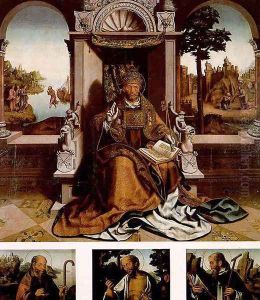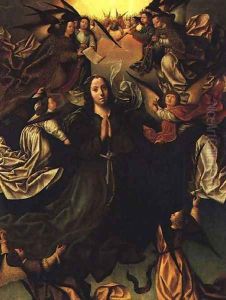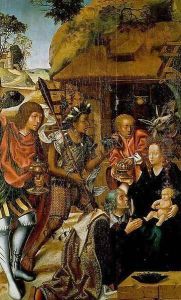Vasco Fernandes Paintings
Vasco Fernandes, more commonly known as Grão Vasco, was a pivotal figure in Portuguese Renaissance painting. Born around 1480, likely in Viseu, Portugal, Vasco Fernandes became one of the most prominent painters of his time in Portugal. While there is limited documentation about his early life and training, his works suggest that he was aware of the developments in Renaissance art taking place in Italy and Flanders, possibly through contacts with Spanish courts or through the arrival of Flemish artworks in Portugal.
Grão Vasco's career is mostly associated with Viseu, where he was active from at least 1501 until his death around 1542. He was the principal painter for the Viseu Cathedral, where he completed several altarpieces. His work is characterized by a masterful use of color and a delicate approach to figures and their expressions, combining elements of the Flemish style with the emerging Renaissance aesthetic.
Notable works attributed to Vasco Fernandes include the altarpieces for the Viseu Cathedral and for the Church of São Francisco in the same city. His altarpieces often featured multiple panels with scenes from the life of Christ or the saints, showcasing his narrative abilities and his skill in composition. The influence of the Renaissance is evident in his use of perspective and in the more humanized portrayal of sacred characters.
Vasco Fernandes's legacy has been somewhat overshadowed by the giants of the Italian Renaissance, but in Portugal, he is celebrated as one of the country's greatest painters. His works are considered national treasures and are mostly kept in Portuguese museums, particularly in the Grão Vasco Museum in Viseu, which is dedicated to his life and art. The exact details of his death are unclear, but it is believed he died around 1542. His influence continued to be felt in Portuguese art, and his style marked a transition from the Gothic to the Renaissance in Portugal.


